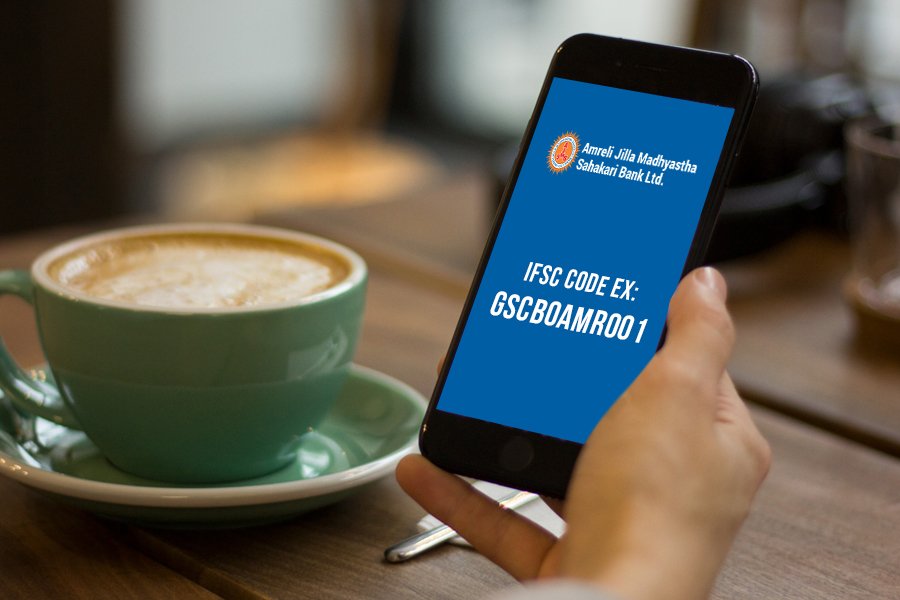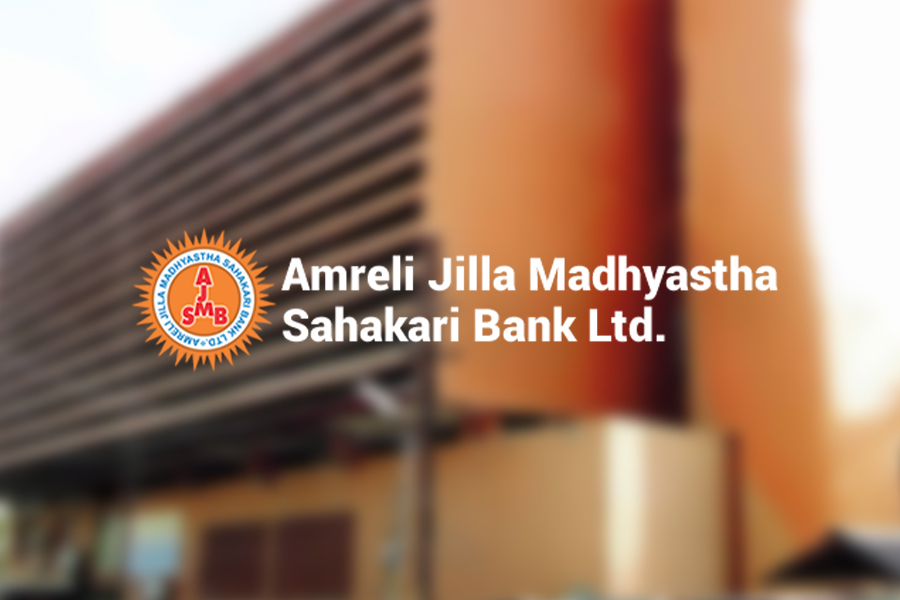 Amreli Jilla Madhyastha Sahakari Bank IFSC Code and MICR Code
Amreli Jilla Madhyastha Sahakari Bank IFSC Code and MICR Code
Find Amreli Jilla Madhyastha Sahakari Bank IFSC Code, MICR Code and branch details for NEFT, RTGS & IMPS transactions.
 Amreli Jilla Madhyastha Sahakari Bank IFSC Code and MICR Code
Amreli Jilla Madhyastha Sahakari Bank IFSC Code and MICR CodeFind Amreli Jilla Madhyastha Sahakari Bank IFSC Code, MICR Code and branch details for NEFT, RTGS & IMPS transactions.
 Amreli Jilla Madhyastha Sahakari Bank IFSC Code Finder - Select Your State
Amreli Jilla Madhyastha Sahakari Bank IFSC Code Finder - Select Your StateAmreli Jilla Madhyastha Sahakari Bank was founded in 1910 in old Vadodara. The bank’s head office is located in Rajmahal Road, Amreli district, in Gujarat. All online fund transfers with the bank can be done successfully by using the Amreli Jilla Madhyastha Sahakari Bank IFSC Code.
The bank currently has 71 branches in Gujarat and is one of the most popular cooperative banks in the state. It caters to the farming and animal husbandry community and the backward rural regions in Gujarat. The bank allows online transactions like NEFT, RTGS, and IMPS to facilitate easy transactions.
The Indian banking system has unique codes allotted by the Reserve Bank of India to track each bank branch in the country. The codes are used for quick identification and verification during online fund transfers like NEFT, RTGS, and IMPS.
In this article, we’ll read about the IFSC and MICR codes and learn about ways to find them online and offline. We will also find out more about online fund transfer methods and the details required to initiate the transactions.

Indian Financial System Code or IFSC code is an 11-character distinct code provided by the RBI to each bank branch in India. IFSC code is a string of alphabets and numbers that denote the bank code and the branch code. The first four digits refer to the bank code and are followed by zero (0).
The remaining six characters are the branch code. These can be numbers, alphabets, or both. For example, the Amreli Jilla Madhyastha Sahakari Bank Head Office Branch IFSC Code is GSCB0AMR001. It is located at Bhojalram Bhavan, Rajmahal Road, Amreli. Here,
But why do you need the IFSC code? Online bank transfers like NEFT, RTGS, and IMPS cannot be initiated if you don’t know the IFSC code of the beneficiary. The code is used by the banking system to identify the branch where the account is located and complete the transaction.
What happens in the event that you enter the IFSC code incorrectly? If the beneficiary’s account number is correct and belongs to the same branch as yours, the transaction might still be successful. However, if the account number is also wrong, it can lead to two possibilities.
One, the transaction may fail, and the amount will be credited back to your account in a couple of business days. Two, the amount might be credited to another account (the number you provided). Contact the branch to reverse the transaction if it’s the latter. That’s why it is essential to know and use the correct IFSC code for online fund transfers.
Magnetic Ink Character Recognition or MICR code is printed at the bottom of the cheques using MICR technology. The code is used when processing the cheques through the ECS (Electronic Clearing System). It helps validate the authenticity of the cheque and speeds up the transaction.
The MICR code is also allotted by the RBI and contains nine digits. It is further broken down into three parts, with three digits in each part representing a different code. For example, the Amreli Jilla Madhyastha Sahakari Bank MICR Code is 365801001. Here,
The MICR code is a bit different from the IFSC Code. You don’t need to enter the MICR code for an online transaction. It is used by the banks to process cheques electronically. In addition, MICR codes are not available for all bank branches.
Some bank branches are non-MICR and rely on manual processing to clear cheque transactions. It is time-consuming and will take anywhere between a week or ten days to deposit the money in the beneficiary’s account.

You now understand the importance of finding the correct IFSC code to initiate NEFT, RTGS, and IMPS transactions. Let’s learn about the different ways to search for the IFSC code online and offline. The offline methods are suitable for beneficiaries as they have ready access to their passbook and chequebook.
Online search tools, like the Find Your Bank website, are a great way to get the IFSC code of any bank branch in the country. You can easily find any bank IFSC Codes on the website. It is free, easy, and reliable. Follow the below steps:
Open the URL in the browser: https://findyourbank.in/
Use the form on the home page to enter the details and find the IFSC code you want to know. The form contains drop-down fields so that you don’t have to type anything. The page automatically reloads after selection to prevent confusion.
The webpage will load the name, address, and contact information about the bank branch along with the IFSC, MICR, and SWIFT (if applicable) codes. Copy the code and use it during online money transfers.
For smartphones, Find Your Bank is available as a Free App. Download it on your Android phone from the Play Store to use it anytime you want.
Every account holder is provided with a passbook to keep track of the transactions that take place in their account. The first page of the passbook has information about the bank branch and the account holder. You can find the IFSC and MICR codes on the first page of the passbook, along with the account number, type, and customer ID of the customer.
The chequebook is allotted to the account holder who applies for one. The first page of the chequebook also has the IFSC and MICR codes printed for easy reference. Each cheque has both codes for authenticating the instrument during the cheque clearing process.
The MICR code is printed at the bottom of the cheque beside the cheque number. The IFSC code is at the top beside the bank’s logo.
The bank’s official website and net banking platforms contain all the necessary information about the bank and its branches. You can find the details of the branches and their respective IFSC codes on the bank’s website.
A final option is to call the customer care center of the bank. You don’t have to be an account holder to ask for the IFSC code. Just make sure not to share any confidential information like PINs or passwords.

There is no need to emphasize the convenience of using online fund transfers to send money to any bank account within the country. NEFT, RTGS, and IMPS are the three main fund transfer methods used for domestic wire transfers. You need to have the bank’s IFSC Code for all three methods.
Let’s read about each online money transfer process in detail.
NEFT is the most used domestic fund transfer that runs on the Deferred Net Settlement (DNS) system that transfers money in batches. The transactions will be cleared once every two hours and credited to the beneficiary’s account.
NEFT transactions have no minimum or maximum limits. The transactions can be made 24*7*365 throughout the year. Each transaction is charged by the bank based on the amount sent. You can initiate an NEFT transaction through net banking, mobile banking, or by visiting the bank branch.
Transaction charges for an NEFT transaction:
You need the following the details to make an NEFT payment:
RTGS is a secure real-time payment system used by the Indian banking system for high-amount transactions. It sends money instantly to the beneficiary’s account. The transaction is irreversible. RTGS payments cost more than NEFT transactions.
Transaction charges for an RTGS transaction:
The minimum RTGS transaction amount is Rs. 2 lakh, but there is no upper limit. It requires the same details as an NEFT payment. You can send money through RTGS from your online banking accounts or by visiting the branch.
IMPS was initiated in 2010 by NPCI (National Payments Corporation of India). It uses the MMID (Mobile Money Identifier) to send money between two bank accounts or registered mobile numbers. IMPS works 24*7 and even on holidays.
The minimum limit for an IMPS transaction is Re. 1, and the maximum is Rs. 2 lakhs. The transaction charges depend on the bank but cannot exceed the upper limit set by RBI. IMPS payments can be initiated through SMS, online banking, ATM, or bank branch.
The following are required for an IMPS transaction:

Amreli Jilla Madhyastha Sahakari Bank was founded in 1910 in the old Vadodara state (Baroda back then). It was called The Amreli Agricultural Generation. It was registered under the Mumbai State Cooperative Act and renamed Amreli Jilla Madhyastha Sahakari Bank in 1913.
The bank has its head office in Rajmahal Road, Amreli, with a total of seventy-one branches throughout Gujarat. The bank received the Best Performance Award by NABARD in 1999-2000. It received more awards over the years for being one of the best-performing cooperative banks in the state.
The bank’s mission is to provide loans and financial services to farmers, cooperatives, and small-scale businesses in Gujarat. Amreli Jilla Madhyastha Sahakari Bank is the only bank in the state to offer personal loan accounts for crop loans to farmers. The bank focuses more on the agricultural sector as it is the main occupation of the people of the Amreli district.
CIF stands for Customer Information File. It is an 11-digit number allotted by the banks to account holders. Banks use this number to track and run individual accounts in the branch. Customers can find the CIF number by logging into their net banking accounts or by calling customer care.
The balance inquiry number for Amreli Jilla Madhyastha Sahakari Bank is 78368 77776. Give a missed call on the number from your registered mobile number to know your account balance.
The contact number for Amreli Jilla Madhyastha Sahakari Bank is (02792) 222601. This number belongs to the head office located in Rajmahal Road, Amreli.
Not yet. The bank’s website shows that they are working on providing mobile banking services to customers. However, it is yet to begin.
The bank has around nine branches in the Amreli district. It has a total of 71 branches throughout the state of Gujarat.